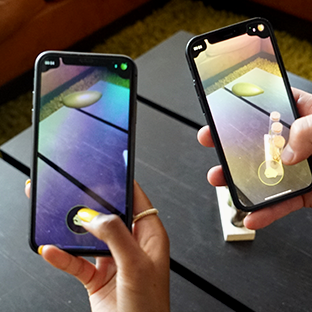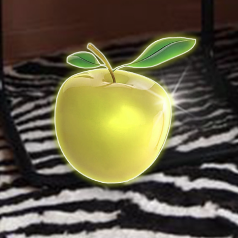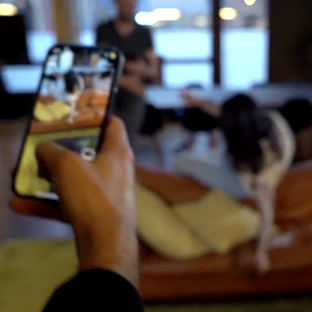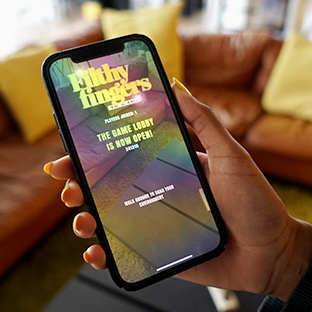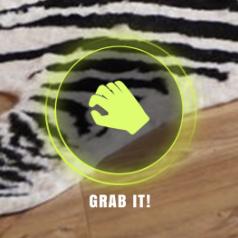AR Multiplayer Game
After a series of prototypes into multiplayer cross-device AR, one of many exciting concepts that developed was our new original mobile game, “Filthy Fingers”. Once we combined augmented reality with peer-to-peer networking, we could challenge up to 8 players in chasing, collecting, and even stealing as much virtual fruit as possible on a timer—ultimately making our office space an even more social place.
Shared human experiences with Niantic Lightship
Based on an open beta of the Niantic Lightship ARDK, (powering Pokémon GO), we were able to mix new multiplayer features with the integration of object occlusion into one Unity build ported for ARKit. The result of the two became the perfect combination for more engaging and physically challenging game mechanics.
Peer-to-peer device networking
To begin, we take the designated “host” device camera input and run it through a neural network to build a mesh of the surrounding physical environment that will be shared with other player devices. A simple messaging system then informs which fruit spawns where, mapped on the active mesh layout in real-time.
Cross-device spatial computing
This mesh allows precise physical interaction between virtual objects and real surfaces, in this particular case enabling the fruit to bounce and roll based on realistic physics. As the virtual fruit objects spawn unpredictably – potentially rolling behind a sofa or bouncing from a table – the rush to collect them creates genuine competition.
Multiplayer immersion, anywhere
We were able to develop both an original game and a strong foundation for countless engaging multiplayer experiences in Augmented Reality. Whether you want to host an interactive AR event in a conference room or swimming pool, a bit of “healthy” competition has no limits!


